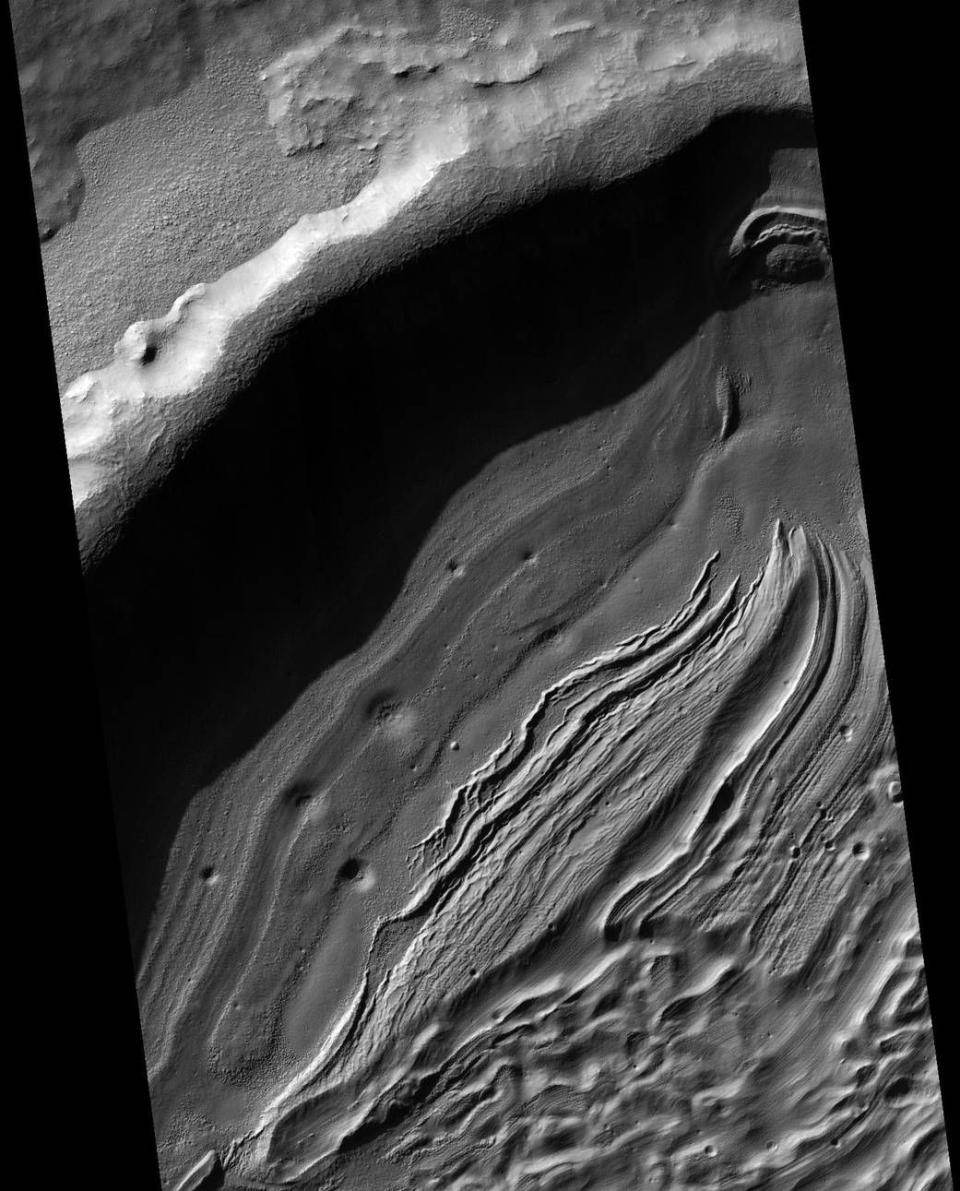Astronauts Could Live in Lava Tubes on Mars

The secret to surviving the punishing surface radiation on Mars could be deep underground.
Radiation is a huge threat to astronauts in space and on planets with little atmosphere.
An astrophysicist studied how Earth's lava tubes block radiation and analogized to Mars.
Scientists have long wondered how we might live in other atmospheres. On Mars, at least, the answer could be a network of large underground tunnels from millennia of high-intensity volcanism. These lava tubes, as they’re known, remain after fast-flowing lava burns through the ground on Mars. On Earth, they would be much smaller or crushed by gravity.
How can you tell if the lava tubes of Mars can protect astronauts? That’s complicated. Astrophysicist and combat veteran Antonio Paris has led this research from inception until publication and followup. He’s previously made the news as a U.S. Army intelligence officer and ufologist, and his paper on lava tubes recently appeared in the Journal of the Washington Academy of Sciences.
Can we leverage natural resources on #Mars, such as lava tubes, to minimize exposure from radiation? pic.twitter.com/NWM0yh2Ka7
— Antonio Paris (@AntonioParis) April 29, 2020
Paris and his team have gone through several interdisciplinary phases in identifying lava tubes and assessing them for habitability. First, he chose a specific place on Mars, Hellas Planitia, a name that means “Greek plain.” This part of Mars experiences less cosmic and solar radiation than much of the rest of the planet’s surface, and Paris says that sheltering astronauts in the deep lava tubes could reduce their exposure even more—into a key zone of survivability. By choosing the least radiated physical feature and the least radiated location, Paris has magnified the radiation-dampening effect of both.
But how do you measure the levels of radiation in and out of the Mars tubes? Well, that’s where Earth’s lava tubes come in.
“To complement this investigation, moreover, 30 in-situ radiation monitoring experiments have been conducted at analog lava tubes located at Mojave, CA, El Malpais, NM, and Flagstaff, AZ,” Paris explains in his paper. By measuring the outside and “inside” (the lava tubes) radiation levels in these locations, Paris has developed an overall sense of how much the lava tube structure reduces exposure to that radiation. From there, translating to Mars involves some fairly straightforward cross-multiplying.

Radiation from space is one of a handful of key obstacles in humankind’s goals to go further into space. The exposure on a trip to Mars is enough that some researchers are considering nuclear thrusters, arguing that a shorter exposure to nuclear radiation is still better than much longer exposure to cosmic radiation. It’s really not even safe to send astronauts without a clear and certain idea of a place where they can shelter from the radiation.
Could the lava tubes be our ticket into long-term habitation on Mars? Fans of LOST have heard this one before, but on an uninhabited planet, what’s the worst that could happen inside a huge, empty cave? The location could be advantageous in other ways as well.
“The candidate lava tubes, moreover, can serve as important locations for direct observation and study of Martian geology and geomorphology, as well as potentially uncovering any evidence for the development of microbial life early in the natural history of Mars,” Paris concludes.
You Might Also Like

